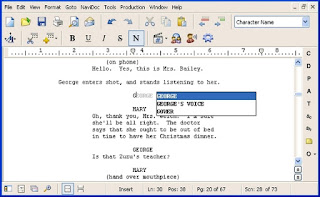If you are absolute beginner then read:How to write a movie script for Absolute Beginners in 2019
Screenplay Portions:
Each screenplay document contains multiple scenes and each scene contains following important sections.
1. Slugline or Heading of the scene
2. Action (Character movement on screen)
3. Character Cue(Name of the character in a scene who is about to speak something)
4. Parenthetical (Instruction to the actor to deliver the dialogue in certain way)
5. Dialogue (The character says something)
6. Transition (Time passage between two scenes)
If you are not aware of the difference between screenplay and script, then read:Screenplay vs Script : What is the difference?
Why Movie Industry Follows Screenplay format?
Plenty reasons are there behind but following are the prime reasons:
1. It is the oldest format that every studio in the film industry follows.
2. Easy to understand such formatted screenplay document to read.
3. Actors can easily understand their part of action and dialogues.
4. Film director can visualise each scene.
5. Well organised information in the document.
6. Every department of movie making process can follow.
7. Easily distinguishes between scene heading, action, character cue, dialogue and transitions.
Remember:
Each scene must begin with a heading which is also known as slugline. Slugline tells reader about the location and whether it is happening interior or exterior and also the time period of the day or night. Then action follows. Whatever character movement audience are going to watch on screen is written then. And then if character says something then first character cue comes and then whatever he says, is followed. If a writer wants to instruct the actor to say a dialogue in certain way then that is written in parenthetical. And if a writer wants to mention the time passage between two scenes then writer mentions otherwise ignores.
Note: By default cut to transition exist in between two scenes if no transition is mentioned.
Screenplay Format:
Scene Heading
Indent: Left: 0.0" Right: 0.0" Width: 6.0"
Action
Indent: Left: 0.0" Right: 0.0" Width: 6.0"
Character
Indent: Left: 2.0" Right: 0.0" Width: 4.0"
Dialogue
Indent: Left: 1.0" Right: 1.5" Width: 3.5"
Parenthetical
Indent: Left: 1.5" Right: 2.0" Width: 2.5"
Transition
Indent: Left: 4.0" Right: 0.0" Width: 2.0"
Transitions are film editing instructions, and generally only appear in a shooting script. Transition verbiage includes:
CUT TO:
DISSOLVE TO:
SMASH CUT:
QUICK CUT:
FADE TO:
Example:
 |
| Screenplay Format Example From Toy Story Movie |
If you are using any kind of text editor, then you must have to consider these industry standard guidelines in your screenplay. However, if you are using any screenplay software then you dont have to worry about the format. By default in such softwares the industry standard screenplay format is maintained automatically.



No comments:
Post a Comment